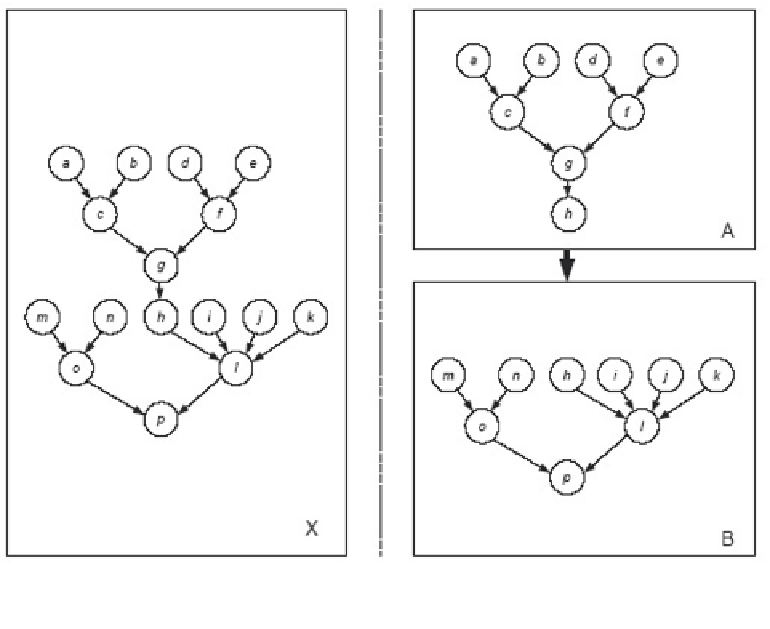Database Reference
In-Depth Information
Figure 1
based on the operations structure (
D
based on the operations structure (
D
1
,
O
1
) with
D
1
= {
a, b,…, p
} and
O
1
={ (
c
, {
a
,
b
}), (
f
}), (
f
}), ( ,
}), ( , {
o
,
l
}). It represents
two alternatives. Alternative X consists of one activity that comprises all these operations.
The other alternative consists of a valid ordering of activities A and B. Note that an arrow
leading from one information element to another signifi es that the former is needed as an
input for the other in some operation. Also note that the ordering of activities A and B is
valid, in accordance with Defi nition 3.
If we consider operation (
c
, {
a
,
b
}) we see that it has a relation with just one other
operation, namely (
g
{
d
,
d
,
d e
}), (
g
}), ( , {
c
,
f
}), (
f
}), (
h
, {
g
}), (
p
}), ( , {
m
,
n
}), (
l
, {
h
,
i
,
j
,
k
}), (
o
, {
m, n
}), (
p
}), (
g
}), (
p
}), (
p
f
}). After all, output
f c
of the former operation is an input of the
latter. On average for activity X, each of its operations has a relation with 12/7 other rela-
tions, being the quotient of the summed number of relations over all operations and the
total number of relations. The maximum number of pair-wise relations that any element
within a set of 7 could have equals 6. Therefore, the relation cohesion of activity X equals
12/(7*6) = 2/7.
Furthermore, there are 6 information elements—
c
,
f
,
operation, namely ( , {
c
,
f
}). After all, output
operation, namely (
g
f
,
f g
,
h
,
o
, and
p—
that are shared
among several operations within X. The rest of the 16 elements are in use by exactly one
operation at a time. Therefore, the information cohesion of activity X equals 6/16. The total
cohesion of activity X is the product of its relation and information cohesion: 2/7 * 6/16
= 12/112. Similarly, we can compute the cohesion coeffi cients of activities A and B. The
results of this exercise are given in Table 1.
If we apply our heuristic to this example, then the division of the operations structure
into A and B is preferable over the single activity X. This appeals to the intuition that activ-
ity X is divided into two parts that are only related to each other through operation (h, {g}).









